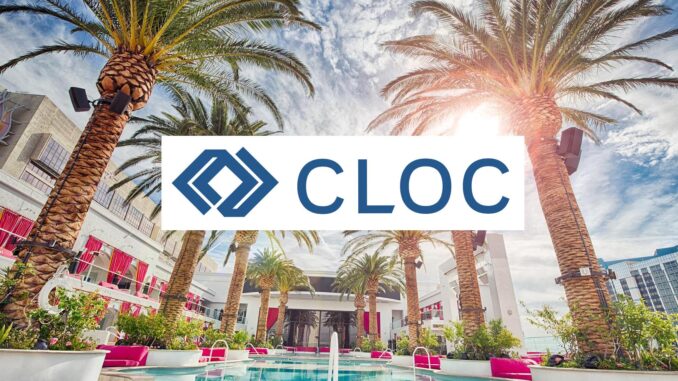
By Casey Flaherty, Chief Strategy Officer, LexFusion.
A decade ago, the Corporate Legal Operations Consortium (CLOC) called itself a ‘book club’ and held small meetings in conference rooms around Silicon Valley. I was not a founder. But I was fortunate enough to be welcomed during those early, exciting, experimental days. As a Big Law litigator turned in-house counsel, it was the first time I had encountered the now ubiquitous term ‘legal operations.’
We’ve come a long way. After three years, CLOC Global Institute is back in-person in Las Vegas. Attendance will shatter records despite corporate travel policies keeping many perennial attendees away in our not-quite-post-pandemic world. CLOC’s growth reflects the broader expansion of legal operations. When CLOC launched as a formal organization in the Q4 2016, there were already 579 members across 377 organizations. Those numbers reached 4,238 members (up 732%) across 1,441 organizations (up 382%) in 57 countries by end of Q1 2022 (before what was likely a big bump in CGI-driven registrations).
Legal operations and CLOC have gone mainstream. But why?
More with for less. The most commonly articulated impetus is that legal operations helps corporate law departments do ‘more with less’ (see here). Empirically, I concede this is an accurate description of the dominant mindset. Normatively, I propose ‘more with less’ is misguided and unsustainable—bad for legal operations, bad for law departments, and, most critically, bad for the enterprises they exist to enable (see here). I believe law departments need more resources (more for more) to properly invest in scale (more for less).
Regardless of differences in characterization, the shared reality is the recognition that demands on law departments are outpacing budgets and bandwidth.
Legal activity increases with business activity. More contracts, more lawsuits, more IP, more deals, more…The law department is tasked with meeting present, and future, business needs. Legal operations addresses the ever-growing gap between (i) the legal support required to deliver better business outcomes at scale and pace and (ii) the resources allocated to do so.
After decades of in-house headcount growth, throwing bodies at the problem is no longer considered a viable option. Indeed, according to the 2021 EY Law Survey, 88% of general counsel expect to reduce legal spend over the next three years. This seems impossible. And it is. Which is why 75% of general counsel in the same survey expect workloads to outpace budgets (and most of the remaining 25% are probably wrong).
Organizational complicatedness is also on the rise. Complicatedness is an ‘increase in organizational structures, processes, procedures, decision rights, metrics, scorecards, and committees.’ As far back as 2014, the Boston Consulting Group estimated internal organizational complicatedness had increased by a factor of 35.
In one respect, legal can have a major impact on complicatedness—adding or reducing friction within the business. But legal is also of the business and therefore required to navigate organizational complicatedness, from pursuing cross-functional collaboration to securing budget.
Legal operations is intended to be a major mesh point with the business for the law department as a function, and therefore has becoming increasingly vital as complicatedness multiplies.
Summing up (prematurely). While there are many ways to characterize the Platonic ideal of legal operations (see CLOC Core Competencies), I offer two connected frames:
- Do more with finite resources. Cost discipline and service delivery excellence are complements necessary to solve for scale in driving better business outcomes on a finite budget as activities, from external supplier management to internal tech enablement, are revisited and re-engineered.
- Make the business case for sufficient resources. Navigating organizational complicatedness requires savvy, including not only delivering business value but also communicating that value in the business vernacular to bolster the pursuit of adequate resources to meet business needs.
One more thing: increasing legal complexity. Yes, legal activity increases with business activity and complicatedness. But even businesses stuck in neutral are operating in an environment of rapidly intensifying legal complexity (indeed, some businesses are experiencing enterprise-altering revenue reductions directly attributable to increasing legal complexity).
Indeed, I truncated the definition of complicatedness above. In full, complicatedness is defined as ‘the increase in organizational structures, processes, procedures, decision rights, metrics, scorecards, and committees that companies impose to manage the escalating complexity of their external business environment.’ (emphasis mine)
The legal complexity of the external business environment is escalating quickly. The vital scholarship from Dan Katz et al. empirically establishing the explosion in legal complexity (statutes, regulations, administrative rules) is not discussed nearly enough. While lacking the severity and the resonance of the very real crisis in the PeopleLaw sector, present, unmet, corporate legal needs are a far more material problem than is commonly understood – which suggests future, unmet, corporate legal needs are a looming catastrophe.
This does not fundamentally change the aforementioned framing, but it does make the problems more acute. The compounding impact of increasing legal complexity on scale and complicatedness means that we are not just fighting inertia, we are fighting gravity.
Which is my personal answer as to why we are here. Legal operations, CLOC, and CGI have all gone parabolic because there is a recognition – if not always a clear articulation – that we are at an inflection point in the relationship between law departments and the enterprises they exist to serve.
—
Many thanks to Casey for this introduction to the CLOC event in Las Vegas, written for Artificial Lawyer.
—
About the Author:

Casey Flaherty is the Chief Strategy Officer of LexFusion, which helps clients to engage with a collaborative circle of curated legal innovation companies. Previously he has been: Director of Legal Project Management at Baker McKenzie, Corporate Counsel at Kia Motors America, and an Associate at Holland & Knight.
—
Conference Promotion:

Legal Innovators California – June 9, San Francisco – All-Day, In-Person Legal Innovation Conference.
If you found the themes discussed here of interest then come along to Legal Innovators California conference on June 9, in San Francisco, where we will be exploring a range of subjects, from legal ops to legal tech and much more, with many great speakers from across the industry.
Ticket information can be found here.

1 Trackback / Pingback
Comments are closed.